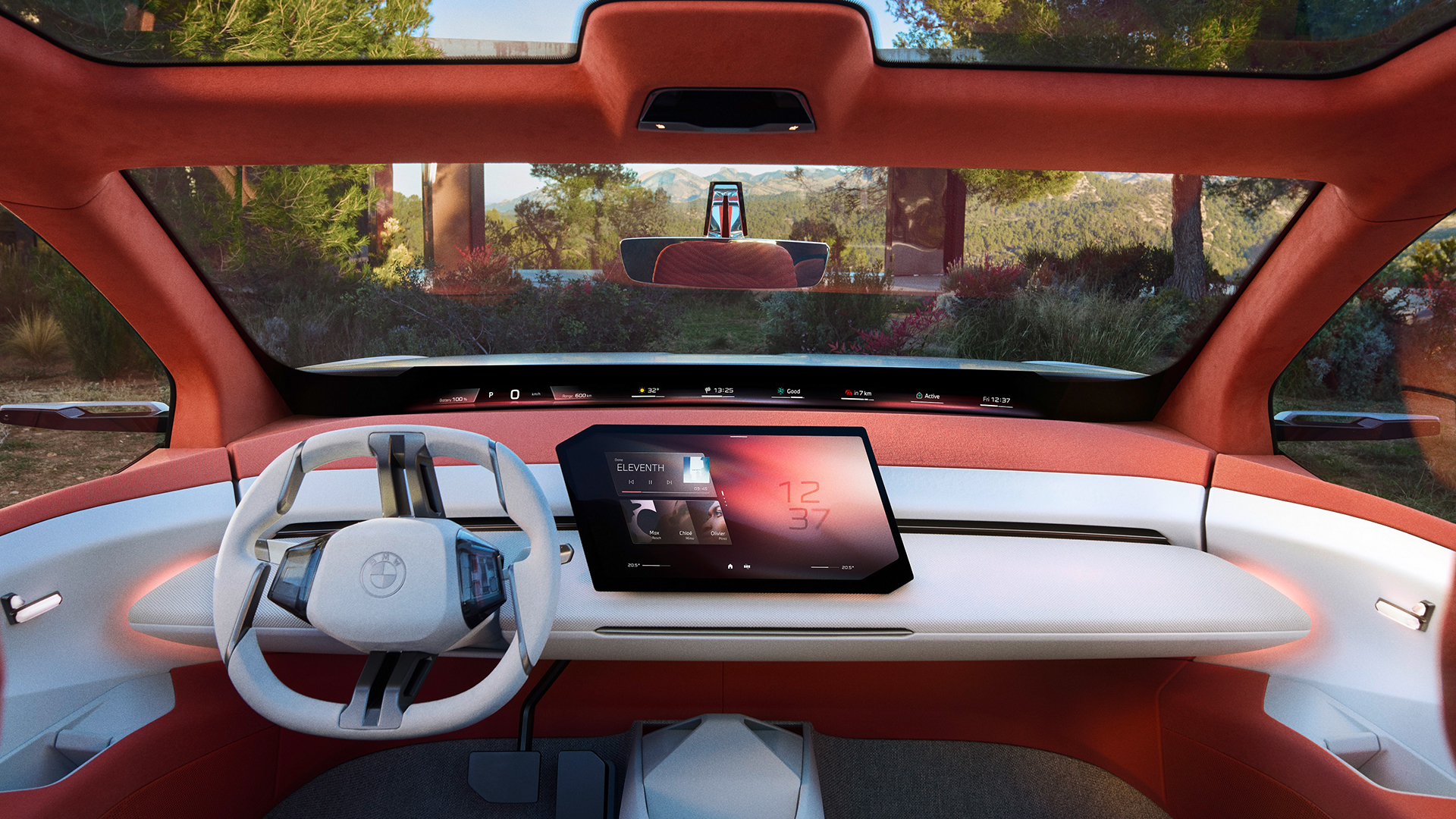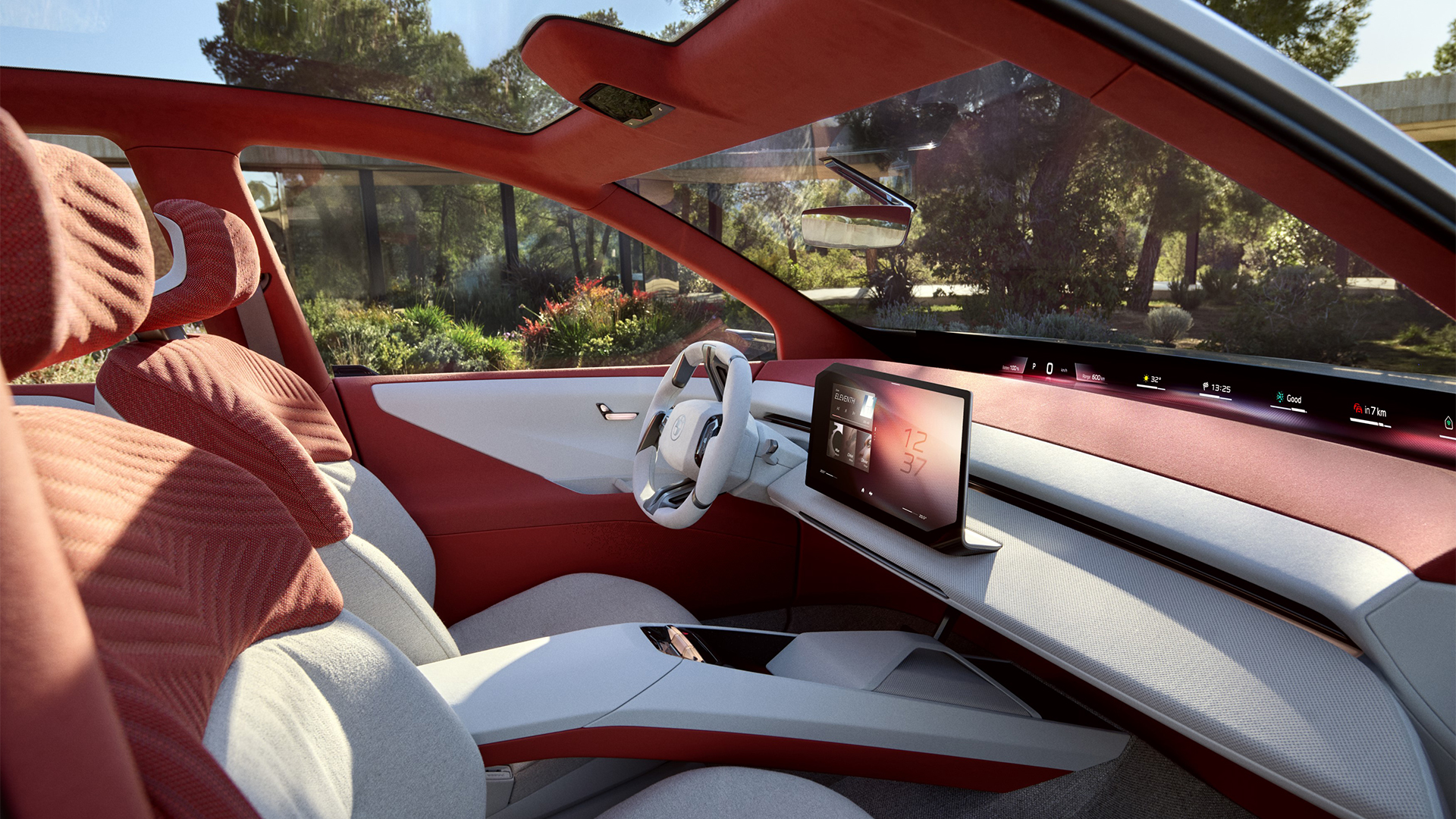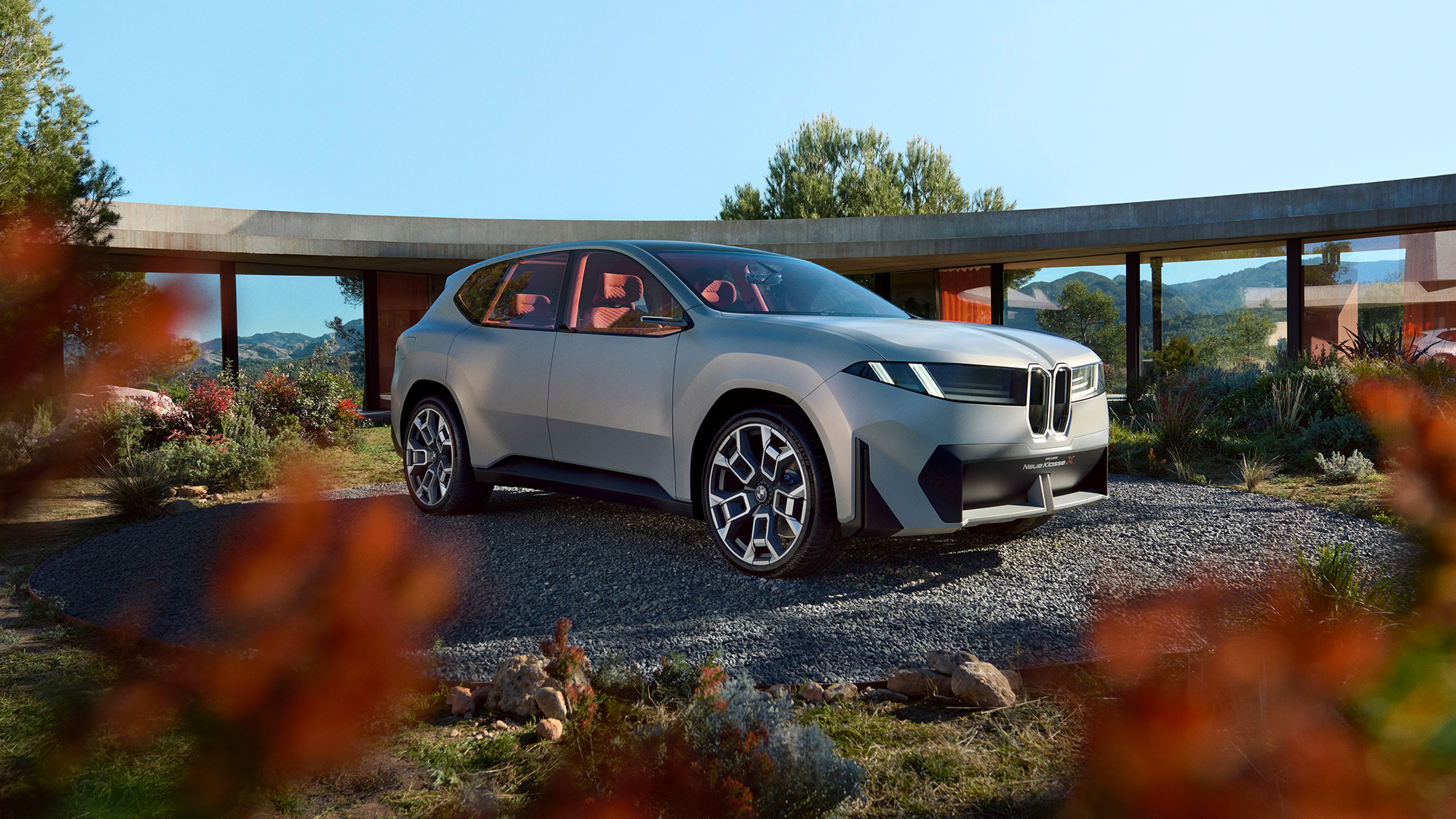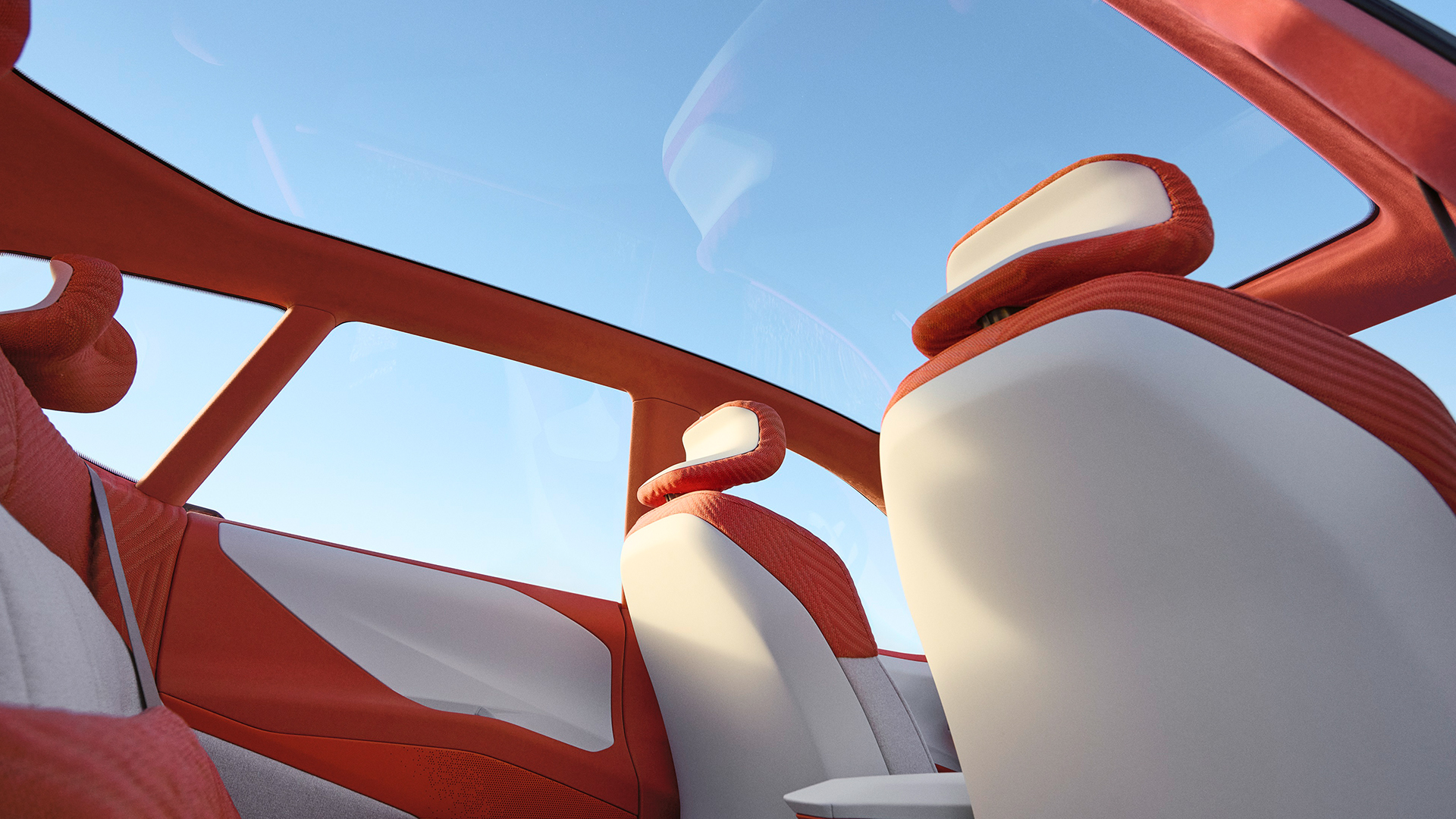BMW’s Neue Klasse X gives us a glimpse of its next electric crossovers – just don’t call it an SUV
BMW has revealed the second of its BMW Group Vision Vehicles in the highly futuristic form of the Neue Klasse X – a concept that joins the sleek and stylish Neue Klasse saloon to provide a hint of what we can expect from an upcoming iX3 replacement.
This mid-sized SUV is dubbed a Sports Activity Vehicle (SAV) by its makers, distancing itself from some of the obvious off-road-inspired design cues with a more approachable, practical, everyday proposition that its designer, Adrian van Hooydonk, says gives it the “robustness and presence of an SUV, just in a much cleaner way”.
The front of the concept sees a return of the classic BMW kidney grille of the 1970s and 80s, which has since grown to almost comedic proportions in more recent vehicles, but has now been pared back to “compliment the upright stance of the Neue Klasse X,” according to van Hooydonk.
High-definition cameras on slender stalks replace analogue wing mirrors, while an all-new light signature at the front and rear both feature.
As with the lower, sleeker and sportier Neue Klasse Vision Vehicle, there’s an enormous amount of glass to let in plenty of natural light.
Overall, the styling picks up where the iX left off. Should the Neue Klasse X go into production in this form, it will bring the iX3 – and other future electric SUVs (or SAVs) – more in line with the bold, modern styling of its flagship iX model.
Naked inside

BMW’s iDrive system has been in place for almost 30 years, but it is often cited as one of the most intuitive and least distracting user interfaces in any modern vehicle. Its pairing of physical buttons that can be mapped to shortcuts and an intuitive central dial make menu-hopping a doddle.
With that in mind, it’s interesting to see that the interior of the Neue Klasse X appears bereft of physical switches and central command dials, relying instead on a large central touchscreen display and a new innovation dubbed Panoramic Vision, which is a large display for both driver and front passenger that extends from pillar to pillar.
In video footage accompanying the reveal, a model can be seen interacting with the main central touchscreen display, selecting widgets that then sit in six programmable slots in the Panoramic Vision screen. These appear to show condensed information on things like the current weather, remaining vehicle range and time to destination.
The driver and/or passenger can then swap out these widgets for a number of car and infotainment features, creating a quick glance-style dashboard of the most important information.

BMW has also introduced the HYPERSONX steering wheel in its second Vision Vehicle, which is said to offer a number of ‘multi-function’ buttons that help the driver interact with the system and core functionality.
Again, video footage of the concept vehicle gives us a closer look at what this involves, and it appears a block of haptic buttons are situated on the flanks of the airbag module, with the left set of switches dealing with cruise control and vehicle functions, while the right adjusts volume and skips tracks.
Thankfully, a pair of slender metal stalks suggests indicators and wiper functionality is highly likely to be mapped to physical switches. Something Euro NCAP recently said it would clamp down on in future safety tests.
There’s also an AI voice assistant, which uses Amazon’s artificial intelligence systems to offer natural language interactions between occupants and the car.
Stephan Durach, Senior Vice President, Connected Company Development at BMW Group, says its cars in the future will “become a personality”, as he claims customers now actively want to converse with a machine.
Bolstering the in-car tech offering is a 3D head-up display that is projected onto the windscreen above the full-width Panoramic Vision screen, but Durach days this will only display key driving information, to avoid adding further distractions.
Brains behind the operation

Alongside the new design direction and infotainment offering, BMW is also keen to draw attention to the new ”super-brains” that will underpin the entire operation. This involves a unique software stack that the German automotive giant claims has been developed in-house.
Again, much was made of this at the launch of the original Neue Klasse at the 2023 Munich Motor Show, where BMW CEO Oliver Zipse unveiled the centralized computing system that would power future EVs.
Rather than a collection of disparate ECUs, which we currently find in modern cars, the trend in the automotive space is to corral all of these into one, extremely powerful computing hub.
Leading processor manufacturer Nvidia, a favored Tier 1 supplier in the automotive industry, offers something similar in its Nvidia Drive units, of which its next generation Orin and Thor system-on-a-chip (SoCs) have been adopted by the likes of BYD, Xpeng and Zeekr to assist with everything from advanced autonomous driving functionality to the use of machine learning in driver monitoring systems.

BMW won’t reveal who it is working with, but says that two of the four “super-brains” it employs in both Neue Klasse and Neue Klasse X will be dedicated to driving dynamics, allowing for faster processing speeds and quicker reaction times in elements like chassis control and electric stability control.
Frank Weber, member of the Board of Management of BMW AG responsible for Development, says the result will be “more dynamic performance, more precision, more efficiency and even more fun to drive”.
For a brand that once hung its hat on the slogans “Sheer Driving Pleasure” and “The Ultimate Driving Machine”, ensuring its upcoming EVs stand out from the competition with a genuine BMW-style driving experience could well be key to the future of the manufacturer’s success.
/cdn.vox-cdn.com/uploads/chorus_asset/file/24935258/Neuralink_N1.jpg)
